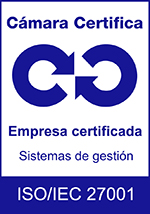Source: Enablon Insights. Translated by Laragon.
The challenges associated with work permit systems have been identified by the author of this publication in his experience as Product Manager for Occupational Health and Safety solutions at Enablon, David Rocha. He assures that there is an opportunity to make work permit management a simpler, faster, more effective and secure process.
As a Product Manager, Rocha has identified the pain points affecting organizations that create problems or prevent them from improving operational performance. Regarding permission to work, here are some of the common themes I hear:
- A lot of non-value-added time is wasted filling in the same data in different documents and waiting for people.
- Lack of consistency in process and approach across sites creates inefficiencies at the enterprise level and creates barriers to effective sharing of best practices and lessons learned
- Tracking a permit in real time is challenging, it is often based on a permit board, which means it can only be viewed at a particular location that is often not up to date.
- It is difficult to track and manage changes made to a permit. It is virtually impossible to collect data for analysis and insight generation.
- Due to the large amount of paper filed or its inefficiency, it is difficult for some organizations to find permissions in the case of an incident investigation or claim, leading to increased legal costs.
- There is a risk of repeat incidents because it is difficult to update or change the work permit process once an incident has been identified.
The weaknesses make it clear that a better way to obtain a permit to work is needed. What should be the “guiding principles” of this new path?
Enablon: a simple, ideal and innovative vision
By combining our skills with the innovative spirit of Enablon’s customer community, we have been able to build a vision of the ideal solution that can lead to significant improvements in work permit systems.
Adaptable digital templates.
First of all, paper-based systems must be replaced with digital systems that include customizable permission templates, workflows and configurable rules to ensure that work practices reflect the desired documented process. Digital systems provide real-time monitoring of ongoing work activity for the entire organization, while notifications and alerts can help users comply with established controls to keep operations safe. For example, an alert may remind someone to record an atmospheric reading or conduct a fire watch at a site after relevant work has been performed.
Mobility and instant notifications.
Second, an intuitive and user-friendly interface that can be used in the field is essential. Smartphones can be leveraged for this purpose. Mobile technology can empower the workforce through a simple interface, notifications, multimedia files and instant communication tools. Therefore, it is possible to implement modern permit-to-work systems that are easy to use and at the same time robust.
Adding value to the entire organization.
Third, we must not lose sight of the fact that any EHS solution, whether it is one for obtaining a work permit or another, must create value at all levels of the organization. To be adopted by someone, a solution needs to help that person, whether it’s a faster way for a contractor to send or receive information, an easier overview of an activity for area managers, or an increase in the quality of knowledge across the enterprise. Software features should be tested by those roles that deal with inefficiencies.
In this post we looked at why a better form of permit to work is needed, as well as the principles that define the ideal solution. In the coming weeks we will publish the third and last post of the series where Enablon’s work permit solution will be presented and explained in detail.
“Al combinar nuestras habilidades con el espíritu innovador de la comunidad de clientes de Enablon, hemos podido construir una visión de la solución ideal que puede conducir a mejoras significativas en los sistemas de permisos de trabajo.”. – Enablon



